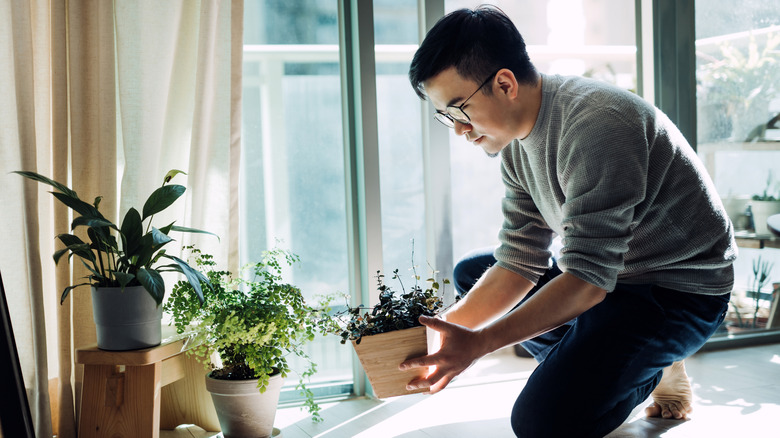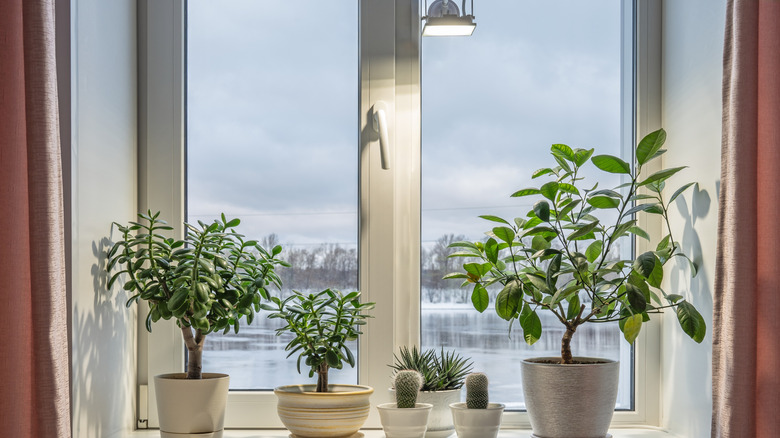Why Moving Your Plants Around To Adapt To Lighting Changes Is Super Important
You might think your plant's spot by the window is perfect, but that doesn't mean it should stay there all year long. Just like outdoor conditions change with the seasons, indoor light shifts, too, and your plants will take notice. For example, in summer, the sun is higher and stronger, while in winter, it's lower, weaker, and the days are shorter. This means the spot where your plant thrived in July might not get enough light come January. As sunlight becomes limited in the later months of the year, it's helpful to make the most of whatever natural light is available and move houseplants closer to brighter spots like windowsills. Similarly, in spring and summer, you may need to pull plants back from direct sun to avoid leaf burn.
Plants adjust their growth based on how much light they get, and if they're stuck in a low-light area for too long, it can throw off their balance or affect the photosynthesis process by which they create energy. Therefore, good plant care often means not keeping them in one place forever. Giving your plants the right amount of light at the right time will help them stay healthy and full of life throughout the changing seasons.
When and where to move your plants to catch the seasonal light
Rotating your plants every few weeks so that all sides get equal sun exposure can help keep them full and upright. If your plant shows signs like pale leaves or stretching toward the window, it likely needs more light. Brown, crispy edges or faded spots may indicate it's getting too much direct sun. In both cases, it's key to recognize the difference between direct and indirect light and which one your plant needs.
Adding artificial lighting can help make up for the lack of natural sunlight, especially during the darker months of the year. Most houseplants do well with 12 to 14 hours of artificial light, but if there's not much natural light, they might need up to 16 hours. Long-day bloomers need more light to flower, while short-day plants like Christmas cactus or African violets do better with around 10 hours. Knowing which types of grow lights to use for your indoor plants can help them thrive indoors.
However, even after adjusting to the lighting changes, you may notice your plant not showing results. Some plants take a break during fall and winter. This is called dormancy, and it's a natural way for them to rest. During this time, they grow very slowly or not at all and don't need as much water or sunlight. When learning how to care for dormant plants in winter and the mistakes to avoid, it's important not to overwater them or move them too much — just let them rest until spring, when they'll start growing again.

